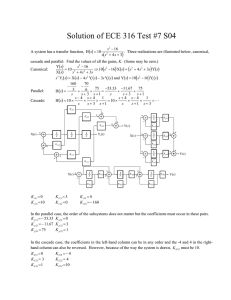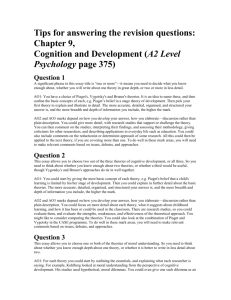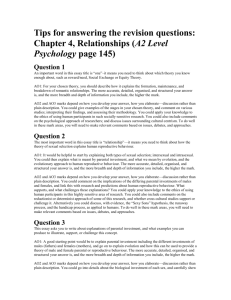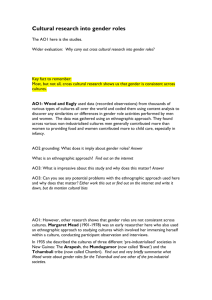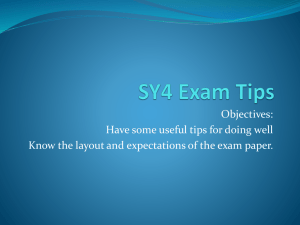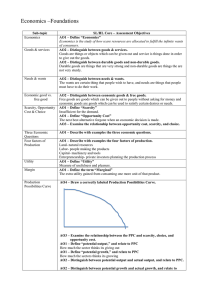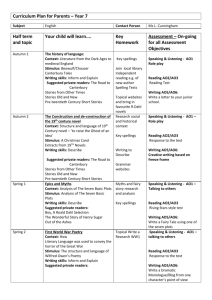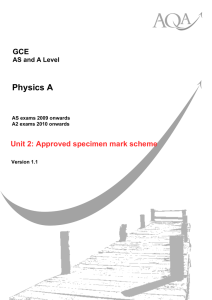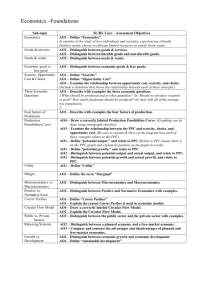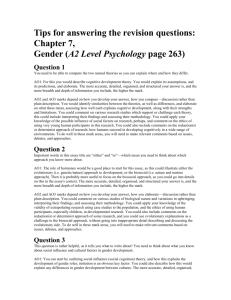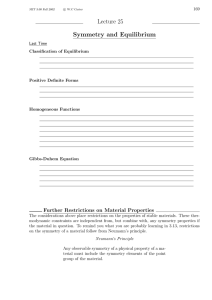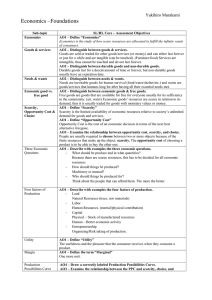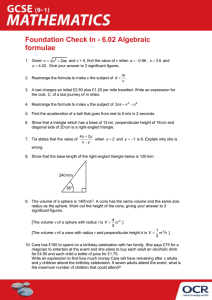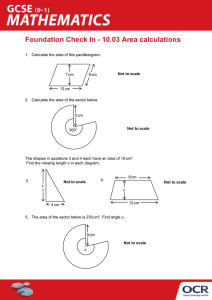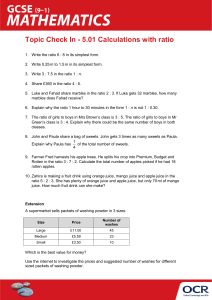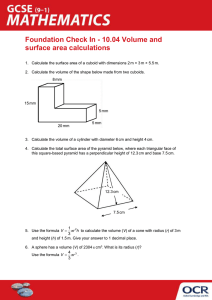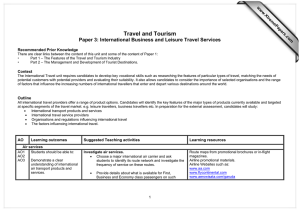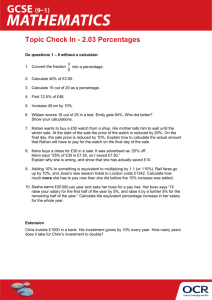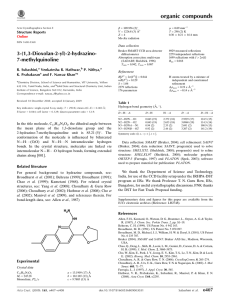The differences between AS part (b) and A2 part (a):
advertisement
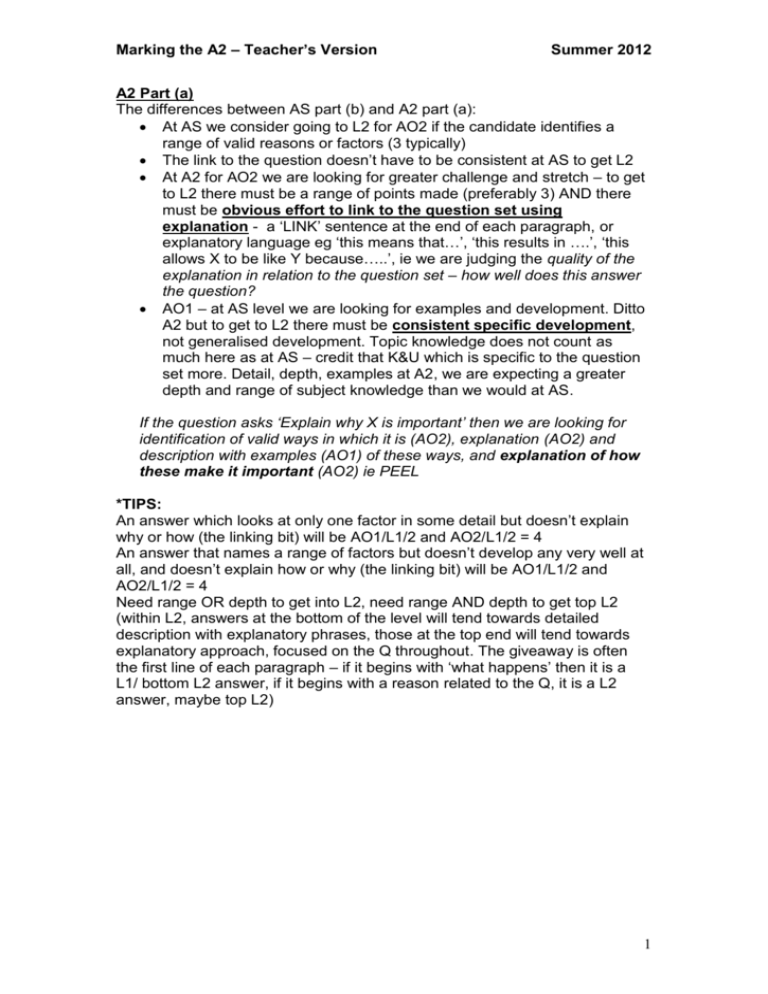
Marking the A2 – Teacher’s Version Summer 2012 A2 Part (a) The differences between AS part (b) and A2 part (a): At AS we consider going to L2 for AO2 if the candidate identifies a range of valid reasons or factors (3 typically) The link to the question doesn’t have to be consistent at AS to get L2 At A2 for AO2 we are looking for greater challenge and stretch – to get to L2 there must be a range of points made (preferably 3) AND there must be obvious effort to link to the question set using explanation - a ‘LINK’ sentence at the end of each paragraph, or explanatory language eg ‘this means that…’, ‘this results in ….’, ‘this allows X to be like Y because…..’, ie we are judging the quality of the explanation in relation to the question set – how well does this answer the question? AO1 – at AS level we are looking for examples and development. Ditto A2 but to get to L2 there must be consistent specific development, not generalised development. Topic knowledge does not count as much here as at AS – credit that K&U which is specific to the question set more. Detail, depth, examples at A2, we are expecting a greater depth and range of subject knowledge than we would at AS. If the question asks ‘Explain why X is important’ then we are looking for identification of valid ways in which it is (AO2), explanation (AO2) and description with examples (AO1) of these ways, and explanation of how these make it important (AO2) ie PEEL *TIPS: An answer which looks at only one factor in some detail but doesn’t explain why or how (the linking bit) will be AO1/L1/2 and AO2/L1/2 = 4 An answer that names a range of factors but doesn’t develop any very well at all, and doesn’t explain how or why (the linking bit) will be AO1/L1/2 and AO2/L1/2 = 4 Need range OR depth to get into L2, need range AND depth to get top L2 (within L2, answers at the bottom of the level will tend towards detailed description with explanatory phrases, those at the top end will tend towards explanatory approach, focused on the Q throughout. The giveaway is often the first line of each paragraph – if it begins with ‘what happens’ then it is a L1/ bottom L2 answer, if it begins with a reason related to the Q, it is a L2 answer, maybe top L2) 1 Marking the A2 – Teacher’s Version AO1 L2 6 – consistent examples throughout, depth of detail, range of points supported well 5 – 2+ specific examples developed in a bit of detail L1 4 – 2+ specific examples listed, or 1 plus good general development of K&U of others 3 – general K&U: good, sound and accurate basic knowledge, not really developed with specifics, or only one point developed Up to 2 – general knowledge only on the topic Summer 2012 AO2 4 – 2+ valid points of explanation with consistent and convincing development of the explanations focused on the question set 3 – 2+ valid points of explanation listed with some valid development of the explanation relative to the question set 2 - valid point(s) of explanation listed, but not developed convincingly OR 1 or 2 points only with a bit of development of explanation To get into L2, the candidate must be trying to offer a valid explanation relative to the question set. There has to be a bit more than just listing/ identifying to get to L2 Listing, describing or identifying is L1 1 – no points of explanation, narrative 2 Marking the A2 – Teacher’s Version Summer 2012 Part (b) LEVEL 3 Accurate AND detailed K&U Most answers at Level 2 will be 16+ Sustained Focus LEVEL 2 Accurate OR detailed K&U Patchy focus A couple of valid arguments per side with some dev. unsustained LEVEL 1 Answers that have a sustained focus on the actual question and cover the majority of the expected ground in a fairly sophisticated way, with support are L3. Level 3 answers analyse the factor in the question and other factors throughout the essay and in a good conclusion. They cover the majority of the ground you would expect and do not miss major points out. Supporting facts are specific and often explained. It is possible for an answer to be Level 3 for AO1, but Level 2 for the skills (either AO2 or AO3 or both) where K&U are sophisticated, detailed and show range, but the links to the question are not quite at L3 standard, or analysis is a bit limited. Quite possible that AO3 can also be Level 3 in such a case. Answers that waffle around the general area, with omissions and imbalances are L2. These are topic answers mainly, unsustained on the specific question asked with limited analysis, not very sophisticated, partially good, but at least recognising some relevant issues and demonstrating some relevant knowledge. Probably restricted in range of arguments and depth of analysis and support. Top Level 2 – a reasonable survey of the topic, attempts to address the question, may be answering a slightly different question, some range of valid factors (2+ on each side) and some decent specific development in places, with some evaluative language hopefully (‘a more important factor is, a key factor is….’). A bit AS-level in terms of analysis, maybe drifts, will usually have a weak conclusion. Trying to sustain an argument and focus = 7+8+6 = 21 ---------------------------------------------------------------------------------------------------------Mid Level 2 – c.2 points on each side, some development of the arguments, some attempted analysis (odd sentences) 6+8+6=20 (some depth and restricted range) Listing answers with some good K+U in description, or good analysis of only 2 factors will be 7+7+5 = 19 (reasonable undeveloped range and some depth) Partial or listing answers that develop the factor in the question quite well and list one point of counter-argument, or answers that just list and describe quite a few factors with little/ no development of the arguments, or describe/ narrate only and make no attempt to analyse/ evaluate (‘another factor that is important is +description…’). May have a weak conclusion, generalised K&U. 6+7+5 = 18 (weak-ish range and/ or depth) Answers that do one or two things, not all that well, some focus, struggling to develop arguments, but something there will be 5+6+5=16 ---------------------------------------------------------------------------------------------------------Bottom Level 2 – ‘just in’ answers: a glimmer of two-sidedness, some attempt to focus, one or two reasonable points listed. Usually lack a conclusion, or have a one-liner. Just better than Level 1: 4+5+4 = 13 ~Answers that miss the point completely and never really get to grips with the issues ~Very brief responses – a paragraph or two only ~One-sided responses, however good – see generic markscheme descriptions. These can only get L1 and no higher for both AO1 and AO2. They MAY scrape into L2 for AO3 if there is a structure and some focus in the one side (10 or 11 total) 3 Marking the A2 – Teacher’s Version Summer 2012 Is this a Level 2 or a Level 3 part (b) answer? What to look for to get an answer into L3: AO1 – consistent exemplification throughout, including range and depth of specific facts (not necessarily in equal measure) which are relevant to the question asked AO2 – a consistent focus on the question set, analysis relevant to the Q, not just identification and explanation of the key points (look at the first sentence of each paragraph), an evaluative conclusion AO3 – sustained argument that doesn’t lapse into periods of irrelevance or narrative, flowing, use of political vocabulary, convincing. Doesn’t have to have all the points. Answers that are unfocused on the Q but quite good on the right topic – model answers - will get L2 for AO2, but may stray into L3 (bottom) for AO1 if the support is detailed and accurate and coincidentally the right material for the Q set. They are unlikely to get L3 for AO3 as the (correct!) argument will not be sustained, but in one or two cases, structure may be good enough to get them there. 4
